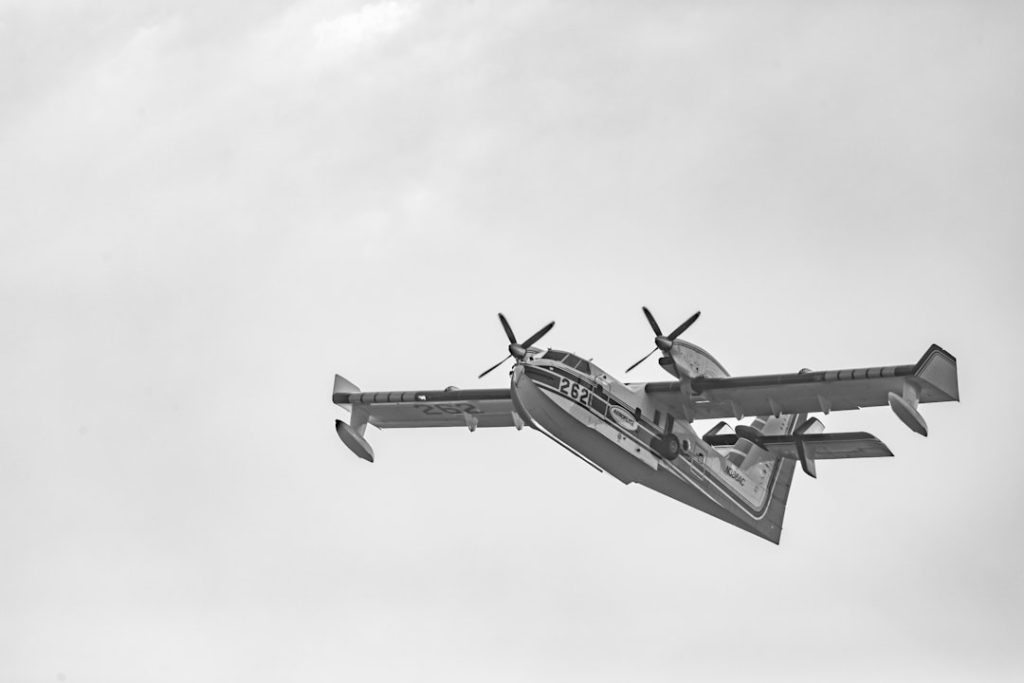The Antonov 225 Mriya, a marvel of engineering and aviation, stands as the largest cargo aircraft ever constructed. Designed and built in the Soviet Union during the 1980s, this colossal airplane was initially conceived to transport the Buran space shuttle, a project that symbolized the height of Soviet aerospace ambitions. The name “Mriya,” which translates to “Dream” in Ukrainian, reflects not only the aircraft’s impressive capabilities but also the aspirations of its creators.
With a maximum takeoff weight of 640 metric tons, the Antonov 225 is a testament to human ingenuity, showcasing what can be achieved when advanced technology meets visionary design. The aircraft’s sheer size and unique design have made it an icon in the aviation world. Its six-engine configuration, massive wingspan, and distinctive nose that can be raised to facilitate loading and unloading cargo set it apart from any other aircraft.
The Antonov 225 has become synonymous with heavy lifting, capable of transporting oversized cargo that would be impossible for other planes to carry. Its operational history is filled with remarkable feats, making it a subject of fascination for aviation enthusiasts and professionals alike.
Key Takeaways
- The Antonov 225 Mriya is the largest and heaviest cargo aircraft in the world, designed and built by the Antonov Design Bureau in Ukraine.
- The development of the Antonov 225 Mriya began in the 1980s to transport the Buran spaceplane and other oversized cargo for the Soviet space program.
- With a wingspan of 88.4 meters and a maximum takeoff weight of 640 tonnes, the Antonov 225 Mriya has a maximum payload capacity of 250 tonnes.
- The Antonov 225 Mriya is capable of carrying a wide range of oversized cargo, including industrial equipment, vehicles, and humanitarian aid, making it a versatile and valuable asset for global transportation.
- The future of the Antonov 225 Mriya remains uncertain due to economic and political challenges, but its impact and legacy as a groundbreaking and iconic aircraft are undeniable.
History and Development of the Antonov 225 Mriya
The development of the Antonov 225 Mriya began in the early 1980s as part of the Soviet Union’s efforts to enhance its space program. The aircraft was designed by the Antonov Design Bureau in Kyiv, Ukraine, with the primary purpose of transporting the Buran space shuttle and other large payloads. The first flight took place on December 21, 1988, marking a significant milestone in aviation history.
The Mriya was not just a product of its time; it was a response to the specific needs of the Soviet space program, which required a means to transport large components across vast distances. The design process was intricate and involved numerous innovations. The Antonov 225 was based on the earlier Antonov 124 Ruslan, which was already a successful heavy cargo aircraft.
However, the Mriya featured several enhancements, including a longer fuselage and increased payload capacity. The aircraft’s development was emblematic of the technological prowess of the Soviet Union during its final years, showcasing advanced materials and engineering techniques that were cutting-edge for the time. Despite its ambitious design and capabilities, production was limited; only one operational unit was completed before the dissolution of the Soviet Union halted further development.
Technical Specifications of the Antonov 225 Mriya

The technical specifications of the Antonov 225 Mriya are nothing short of extraordinary. With a length of 84 meters (275 feet) and a wingspan of 88.4 meters (290 feet), it dwarfs most other aircraft in existence. The aircraft’s maximum takeoff weight is an astounding 640 metric tons (1.4 million pounds), allowing it to carry payloads that are simply beyond the reach of conventional cargo planes.
Its six Ivchenko Progress D-18T turbofan engines provide a thrust of approximately 51,600 pounds each, enabling it to achieve impressive performance metrics despite its massive size. The Mriya’s cargo hold is equally remarkable, measuring 43 meters (141 feet) in length and 6.4 meters (21 feet) in height, with a volume capacity of around 1,200 cubic meters (42,000 cubic feet). This allows for the transportation of oversized items such as industrial equipment, large machinery, and even entire sections of wind turbines.
The aircraft is equipped with a unique nose that can be raised to facilitate loading and unloading, allowing for drive-on/drive-off capabilities that are particularly advantageous for transporting large vehicles or equipment. Additionally, its landing gear consists of 32 wheels, providing stability and support when handling heavy loads.
Role and Capabilities of the Antonov 225 Mriya
| Aspect | Details |
|---|---|
| Role | Strategic airlift cargo aircraft |
| Capabilities | Can carry oversized payloads, such as satellites and large machinery |
| Maximum Payload | 250,000 kg (550,000 lb) |
| Length | 84 m (275 ft 7 in) |
| Wingspan | 88.4 m (290 ft 0 in) |
The primary role of the Antonov 225 Mriya is to serve as a heavy cargo transport aircraft capable of moving oversized and exceptionally heavy items across long distances. Its design allows it to operate in various environments, including remote airfields where other large aircraft may struggle to land or take off. The Mriya has been utilized in numerous capacities beyond its original purpose of transporting space shuttles; it has played a vital role in humanitarian missions, disaster relief efforts, and commercial cargo transport.
One of the key capabilities of the Antonov 225 is its versatility in handling diverse types of cargo. It can accommodate various configurations depending on the nature of the load, whether it be oversized machinery or multiple standard shipping containers. The aircraft’s ability to carry payloads exceeding 250 metric tons makes it indispensable for industries such as oil and gas, construction, and aerospace.
Furthermore, its operational range allows it to reach destinations worldwide without requiring extensive ground support infrastructure.
Notable Operations and Achievements of the Antonov 225 Mriya
Throughout its operational history, the Antonov 225 Mriya has achieved numerous notable milestones that underscore its significance in aviation and logistics. One of its most famous missions occurred in 2001 when it transported a complete Airbus A300 fuselage from France to Canada for assembly at Bombardier’s facility. This operation highlighted not only the aircraft’s capacity but also its ability to facilitate complex logistical challenges in the aerospace industry.
In addition to commercial operations, the Antonov 225 has been instrumental in humanitarian efforts. For instance, during natural disasters such as earthquakes or floods, it has been deployed to deliver essential supplies and equipment to affected regions where traditional transport methods may be compromised. In 2020, amid the COVID-19 pandemic, the Mriya was utilized to transport medical supplies across continents, showcasing its adaptability in times of crisis.
These operations have solidified its reputation as a reliable workhorse capable of meeting urgent global needs.
Comparison with Other Cargo Aircraft

When comparing the Antonov 225 Mriya with other cargo aircraft, it becomes evident that it occupies a unique niche within the aviation industry. The Boeing 747-8F and Lockheed Martin C-5M Super Galaxy are two prominent competitors in the heavy cargo segment; however, neither can match the sheer size or payload capacity of the Mriya. The Boeing 747-8F has a maximum payload capacity of around 140 metric tons, while the C-5M can carry approximately 130 metric tons.
In contrast, the Antonov 225’s ability to transport over double that amount sets it apart as an unparalleled giant in air freight. Moreover, while both competitors have their strengths—such as speed and operational efficiency—the Antonov 225 excels in transporting oversized cargo that would require disassembly for other aircraft. Its unique loading capabilities allow for direct drive-on/drive-off operations that are not feasible with most other cargo planes.
This distinction makes it an invaluable asset for industries requiring specialized transport solutions for large equipment or structures.
Future of the Antonov 225 Mriya
The future of the Antonov 225 Mriya remains uncertain following significant geopolitical events that have impacted Ukraine and its aviation industry. As of October 2023, there have been discussions regarding potential restoration efforts for the aircraft after it sustained damage during military conflicts. The desire to preserve this engineering marvel is strong among aviation enthusiasts and professionals alike; however, restoring such a complex machine poses significant challenges due to its unique design and specialized components.
In addition to restoration efforts, there is ongoing interest in developing new heavy-lift aircraft that could complement or succeed the Antonov 225’s capabilities. While no current projects have been officially announced that could rival its specifications directly, advancements in materials science and aerodynamics may lead to innovative designs in future cargo aircraft. The legacy of the Antonov 225 will undoubtedly influence these developments as engineers draw inspiration from its groundbreaking design and operational history.
Impact and Legacy of the Antonov 225 Mriya
The impact of the Antonov 225 Mriya on aviation and logistics cannot be overstated. It has redefined what is possible in air transport by demonstrating that enormous payloads can be moved efficiently across vast distances. Its legacy extends beyond mere specifications; it embodies human creativity and determination in overcoming engineering challenges.
As industries continue to evolve and demand for specialized transport solutions grows, the influence of the Antonov 225 will remain evident in future designs and innovations. The Mriya has become more than just an aircraft; it is a symbol of national pride for Ukraine and a testament to what can be achieved through collaboration and vision. Its remarkable achievements have inspired generations of engineers and aviators worldwide, ensuring that its legacy will endure long after its final flight.
Whether through restoration efforts or new developments inspired by its design principles, the spirit of the Antonov 225 will continue to shape the future of aviation for years to come.


